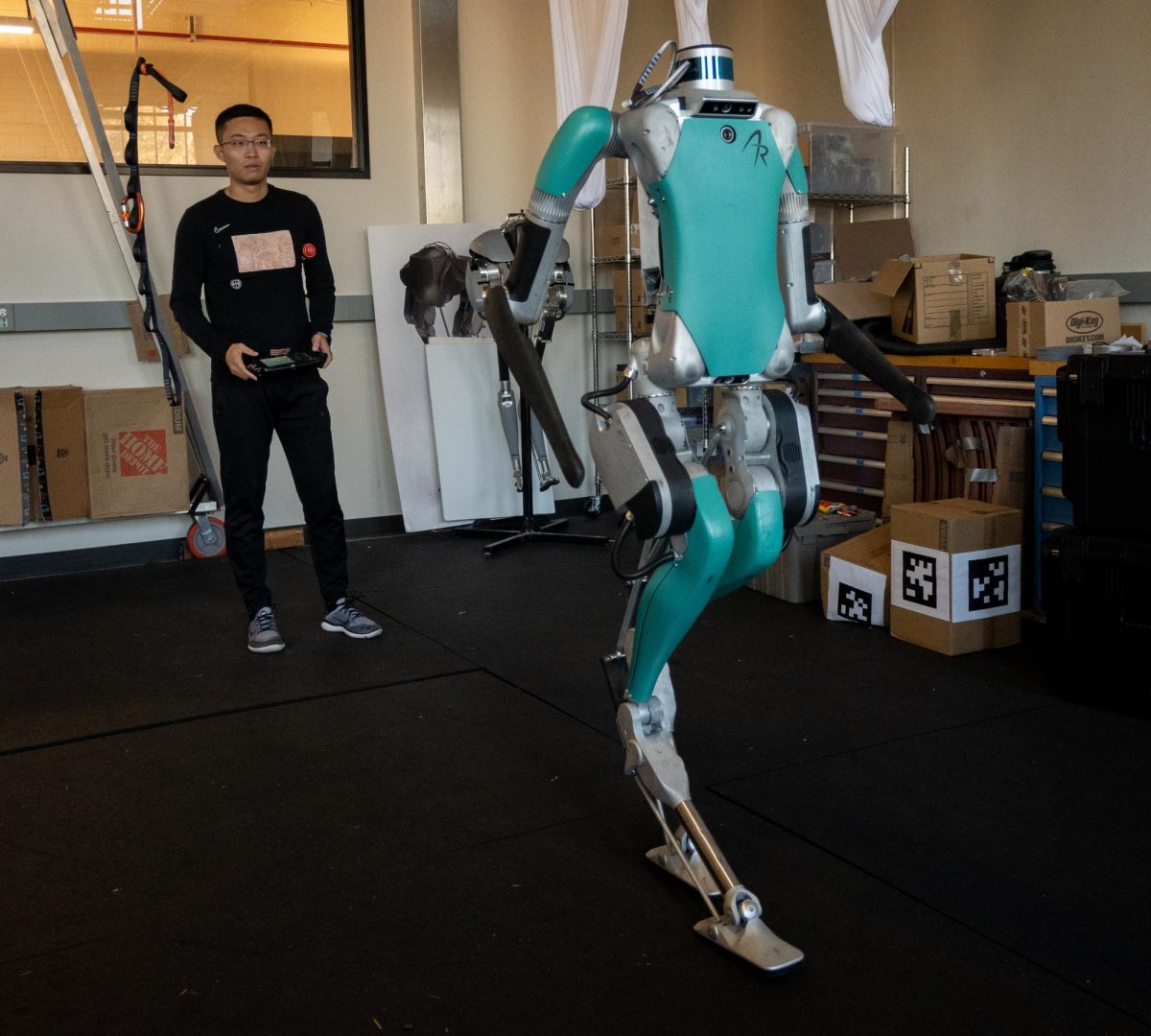Advances in robotics produced at Oregon State University led to the creation of robot Digit, who visited the Pentagon in early October.
Digit is the successor to Cassie, which won the Guinness World Record for fastest 100-meter by a bipedal robot.
Unlike Cassie, Digit also comes with arms, a torso, hands and a head. Digit will be capable of walking in multiple directions, navigating obstacles, balancing itself when bumped and picking up objects.
Both robots were developed at OSU’s Dynamic Robotics and Artificial Intelligence Laboratory and produced at Agility Robotics, an OSU spinout company.
According to Helei Duan, a doctoral student working at DRAIL, the demonstration was a public event attended by a crowd of people from diverse backgrounds who were able to ask questions about the robot.
“The crowd finds the robot appealing and has many interesting questions, such as why Digit’s legs look like a bird, the applications of bipedal robots and future research plans,” Duan said. “We found the people there are thinking towards similar usages as much as we are for our future research.”
Alan Fern, professor of computer science at OSU and co-director of DRAIL, said that while most other robots need large engineering teams to develop complex behaviors, Digit’s behaviors were trained in a simulation using machine learning. After training, the resulting software was transferred to the real robot.
“This allows us to take advantage of advanced AI learning techniques, which require huge amounts of data/experience without needing to get that experience in the real world, which would not be practical for the real robot,” Fern said in an email.
According to Fern, advances in this sim-to-real learning approach will lead to new applications requiring flexible and robust robot behaviors.
“It is definitely a rewarding journey to do any research with bipedal robots. The research itself involves much knowledge across various domains, such as how legged animals move in terms of physics and biomechanics,” Duan said.
Fern estimates that it will take a decade before highly general-purpose humanoid robots can help people with everyday tasks. Until then, a few key challenges include improving the robot’s ability to accept and perform natural human instructions, along with the range of behaviors that they can learn.
Currently, Fern estimates that early versions of Digit, such as the one at DRAIL, can take more than $200,000 to produce, a price that will change with the construction of Agility Robotics’ manufacturing plant, which is being built in Salem. DRAIL’s research is supported by research grants from the Defense Advanced Research Projects Agency and the National Science Foundation.
“When people hear about robots and the military, their minds go to scary places. Our focus is on getting robots that can do the grunt work involved in civilian and military applications. Think warehouse work, setting up base camps, general logistics, etc.” Fern said.
According to Duan, DRAIL has many resources to support research on legged robots, which motivated Duan to join.
Duan said that working at DRAIL on the underlying research problems of robots like Cassie and Digit are always challenging, but it is also rewarding to see the robots perform intended behaviors.
“The past research outcomes definitely helped us to move forward with Cassie and Digit. And right now, we are developing newer methods to demonstrate more behaviors with the robots,” Duan said. “If you are inspired by our works, feel free to talk to any of us in the lab, and join us to make more impressive stuff.”


















































































![Newspaper clipping from February 25, 1970 in the Daily Barometer showing an article written by Bob Allen, past Barometer Editor. This article was written to spotlight both the student body’s lack of participation with student government at the time in conjunction with their class representatives response. [It’s important to note ASOSU was not structured identically to today’s standards, likely having a president on behalf of each class work together as one entity as opposed to one president representing all classes.]](https://dailybaro.orangemedianetwork.com/wp-content/uploads/2025/03/Screenshot-2025-03-12-1.00.42-PM-e1741811160853.png)

























